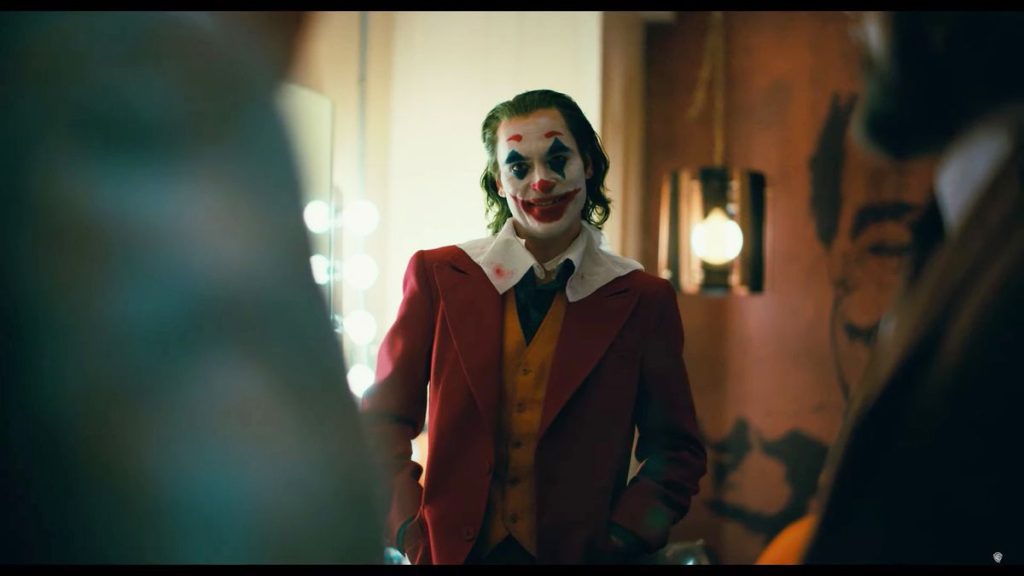In the realm of cinematic narratives that blur the boundaries between reality and illusion, Todd Phillips’ “Joker” stands as a provocative masterpiece. Released amidst the backdrop of a cinematic landscape dominated by shared universes and franchise obligations, “Joker” emerges as a rare breed—a film unshackled from the constraints of conventional comic book storytelling. With its R-rating and unflinching exploration of the psyche of the Clown Prince of Crime, “Joker” immerses audiences in a harrowing journey through the fractured mind of Arthur Fleck.
At the heart of “Joker” lies a compelling enigma: How much of what transpires on screen is real, and how much is a figment of Arthur’s imagination? From his tumultuous relationship with Sophie to his surreal appearance on the Murray Franklin show, the film blurs the lines between fantasy and reality, leaving viewers to question the authenticity of each unfolding scene.
One of the most haunting elements of “Joker” is its portrayal of Arthur’s laughing condition—a manifestation of his inner turmoil and psychological anguish. Whether viewed as a genuine medical affliction or a symptom of deeper psychological trauma, Arthur’s laughter serves as a constant reminder of his fragile mental state, propelling him further down the path of madness.
The film’s narrative intricacies extend beyond Arthur’s personal struggles to encompass broader themes of identity and belonging. The revelation surrounding his purported parentage—embroiling him in the complex web of Thomas Wayne’s legacy—adds a layer of intrigue to Arthur’s already convoluted journey. As viewers grapple with the ambiguity of his origins, “Joker” challenges conventional notions of heroism and villainy, presenting a protagonist whose descent into darkness blurs the lines between sympathy and condemnation.
Yet, amidst the swirling currents of uncertainty, “Joker” offers glimpses of clarity—moments of raw emotion and unvarnished truth that pierce through the veil of illusion. Whether it’s Arthur’s fleeting connection with Sophie or his chilling transformation into the titular character, these moments of authenticity serve as anchors in a sea of uncertainty, grounding the film’s narrative in the raw humanity of its protagonist.
As audiences continue to dissect and debate the intricacies of “Joker,” one thing remains clear: Todd Phillips has crafted a film that defies easy categorization and invites viewers to engage with its themes on a deeper level. Whether viewed as a character study, a psychological thriller, or a commentary on society, “Joker” stands as a testament to the power of cinema to challenge, provoke, and ultimately, to captivate.
FAQ
Is “Joker” connected to the larger DC Extended Universe (DCEU)?
No, “Joker” exists as a standalone film separate from the continuity of the DCEU. It forges its own path, free from the constraints of shared universe storytelling.
What inspired Todd Phillips’ interpretation of the Joker character?
While “Joker” draws inspiration from elements of the comic book mythology, it also takes cues from gritty, character-driven films like “Taxi Driver” and “The King of Comedy.” Phillips and co-writer Scott Silver reimagined the Joker as a complex and psychologically troubled figure, delving deep into the character’s origins and motivations.
What is the significance of Arthur Fleck’s laughing condition?
Arthur’s condition, known as Pseudobulbar Affect, serves as a poignant metaphor for his inner turmoil and alienation from society. Whether viewed as a genuine medical affliction or a psychological coping mechanism, Arthur’s laughter is a constant reminder of his fractured psyche.
What is the true nature of Arthur’s relationship with Sophie?
The film intentionally blurs the lines between reality and fantasy, leaving viewers to question the authenticity of Arthur’s interactions with Sophie. While their initial encounter seems genuine, subsequent revelations suggest that their relationship may have been a fabrication of Arthur’s imagination.
What role does Thomas Wayne play in the story?
Thomas Wayne’s portrayal in “Joker” deviates from traditional depictions of the character as a noble philanthropist. The film suggests a more morally ambiguous interpretation of Wayne, leading to speculation about his connection to Arthur’s past.
Are there plans for a sequel to “Joker”?
While there have been discussions about a potential sequel, no official announcement has been made. Director Todd Phillips has expressed interest in further exploring the character’s journey, but the future of the franchise remains uncertain.
What is the significance of the film’s ambiguous ending?
The ending of “Joker” leaves many questions unanswered, inviting viewers to interpret the events of the film in their own way. Whether viewed as a descent into madness or a triumphant embrace of chaos, the ending serves as a fitting conclusion to Arthur Fleck’s enigmatic journey.
